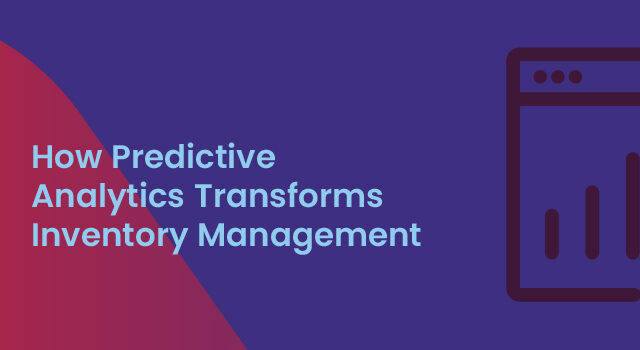Discover how CFOs can turn inventory into a strategic asset by using AI tools to mitigate tariff impacts, improve cash flow, and optimize operations.
Understanding the financial impact of tariffs on inventory.
Today, 70% of SMBs cite rising costs as their primary concern, according to Netstock’s latest Tariff Impact Report. Inventory, often one of the largest expenses on a balance sheet, is now under increasing pressure due to tariffs. In this volatile trade environment, inventory isn’t just stock—it’s cash on the line, and it could very well be the biggest untapped source of cash.
Much like a chess player, the modern CFO must think several moves ahead, constantly planning for various scenarios. With tariffs and ongoing supply chain disruptions, it’s no longer just about balancing the books—it’s about strategically positioning inventory as a critical asset that can mitigate financial risk and unlock hidden value.
What’s in this post:
- Elevated working capital requirements: The new normal
- Inventory Build-Ups and cost of capital exposure
- Compressed supplier payment terms: Liquidity under pressure
- Demand volatility and forecast inaccuracy: The hidden risks
- Leveraging AI tools for smarter inventory management
- Real-World success stories: Edwards Garment and Ubique Group
- Strategic moves CFOs can make right now
- Finance has a front-row seat with the right tools
Elevated working capital requirements: The new normal
The most immediate impact of rising tariffs is on working capital. When tariffs increase, so do procurement costs, leading to higher inventory valuations on the balance sheet. This means more cash is tied up in inventory, constraining liquidity and making it harder to invest in other critical areas. According to Netstock’s report, more than 50% of respondents expect tariffs to increase the cost of more than 50% of their inventoried items, further intensifying the pressure on working capital. The result? Elevated working capital requirements have become the new normal for CFOs managing inventory.
Inventory build-ups and cost of capital exposure
Tariff disruption has prompted some businesses to adopt preemptive stockpiling strategies. While this approach can mitigate the risk of stock-outs, it accelerates cash burn and increases carrying costs. The challenge for CFOs is to strike a balance between having enough inventory to meet demand and not tying up too much cash in slow-moving stock. This balancing act is crucial for maintaining healthy free cash flow (FCF).
Compressed supplier payment terms: Liquidity under pressure
Upstream suppliers, facing their own margin pressures due to tariffs, are shortening payment cycles or requiring larger upfront deposits. This shift compresses the cash conversion cycle (CCC), leaving businesses with less flexibility to manage payables and receivables. CFOs must proactively renegotiate terms or evaluate alternative financing strategies to maintain cash headroom and preserve agility.
Demand volatility and forecast inaccuracy: The hidden risks
Tariff-driven price fluctuations are introducing new levels of variability in customer demand. This unpredictability complicates sales and operations planning (S&OP), leading to either excess inventory or stock-outs, both of which have negative cash flow implications. Accurate demand forecasting has never been more critical, and CFOs need the right data-driven tools to adapt to these rapid changes. Marc Marchese, Assistant Manager – Operations at Metalworks, sums it up perfectly:
“Tariffs have been a moving target for Metalworks, with little clarity on which products will be impacted and when. The team has had to adapt on the fly. It’s a constant battle back and forth. There’s a lot of uncertainty, and it’s not like we can really plan for any of this, because we don’t know. Nobody knows.”
Leveraging AI tools for smarter inventory management
You wouldn’t trade stocks without real-time data, so why plan inventory that way?
Manual spreadsheets might have worked in the past, but today’s volatility demands smarter tools. Relying on static formulas and fragile macros is risky business, especially when demand shifts fast and supply chains are unpredictable.
That’s where AI-powered planning tools step in. These tools help CFOs mitigate risks, optimize cash flow, and improve operational efficiency. Supply and demand planning solutions, made smarter with AI, can analyze real-time data, model various scenarios, and provide actionable insights that human planners might miss. AI tools will help optimize inventory turnover, reduce excess stock, and, in turn, free up working capital, turning inventory from a cost center into a cash-generating asset.
“Relying on spreadsheets is like trading blind. AI-driven inventory planning allows us to align operations with financial strategy—reducing waste, protecting margins, and turning inventory into a lever for growth, not drag.” Vincent DiDomizio, CFO at Netstock
Real-World success stories: Edwards Garment and Ubique Group
Edwards Garment and Ubique Group are prime examples of how inventory management solutions can lead to significant financial benefits. Edwards Garment achieved a $900,000 reduction in inventory write-offs by implementing Netstock’s solution. They moved from a manual, spreadsheet-based system to an automated platform that provided real-time visibility and intelligent forecasting.
Ubique Group also saw impressive results. By integrating Netstock with their ERP system, they gained better visibility and control over inventory, leading to smarter purchasing and demand planning. The result? A $10 million reduction in operating inventory on active products—while improving fill rate by over 15%. These case studies highlight the tangible benefits of adopting advanced inventory management solutions.
Strategic moves CFOs can make right now
For CFOs, inventory isn’t just a supply chain concern—it’s a financial strategy. Managing it with intention can unlock cash, reduce risk, and fuel smarter decisions.
Here’s where to focus:
- Enhance rolling cash flow forecasts: Build tariff scenarios and landed cost changes into your 13-week rolling forecasts to stay ahead of cash flow pressures and maintain control.
- Use scenario planning to stay a few moves ahead: Model best, worst, and likely-case scenarios to understand the impact of demand shifts, supplier delays, or trade changes—before they happen. Just like chess, success depends on anticipating the next move. Grundéns, for example, works primarily within the U.S. but sources globally, so keeping a close eye on potential tariff changes is essential. Their team uses scenario planning to run “what-if” models, enabling them to adjust costs and margins proactively, rather than reactively.
- Optimize inventory turnover: Identify where stock is tying up working capital. Improving turnover and reducing days inventory outstanding (DIO) can release significant cash.
- Tighten demand planning and S&OP cadence: Move from static annual planning to a responsive monthly or weekly cycle. Integrate real-time demand signals to stay aligned with market needs and avoid costly over- or understocking.
- Strengthen supplier strategy: Rethink sourcing strategies—explore alternate suppliers, compare lead times and costs, and assess trade-offs between resilience and margin. Negotiate terms that support cash goals without compromising relationships.
- Get closer to the warehouse floor: CFOs should walk the floor, engage with planning teams, and dig into the data behind the inventory. Every dollar tied up on the shelf should have a reason to be there.
- Proactively manage credit lines: Review financing options early. Lock in headroom before financial constraints tighten—so you’re ready to act when opportunities or disruptions arise.
Finance has a front-row seat with the right tools
Tariffs, lead times, and shifting demand aren’t just supply chain issues—they’re financial ones. CFOs who lead on inventory strategy will gain a competitive advantage in cash management, risk mitigation, and margin protection. With AI-powered planning, finance leaders don’t just react—they model, forecast, and adapt with confidence. The path forward? Smarter tools, tighter alignment, and more purposeful decisions. Now’s the time to make inventory a lever for growth, not a liability.




